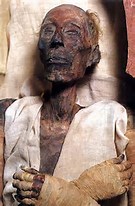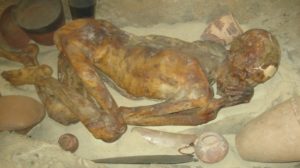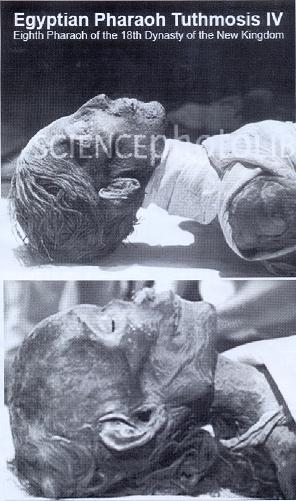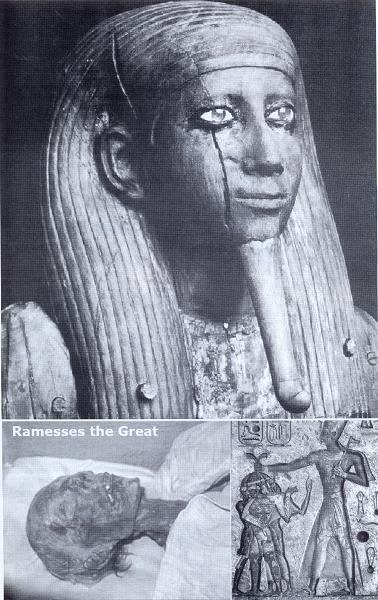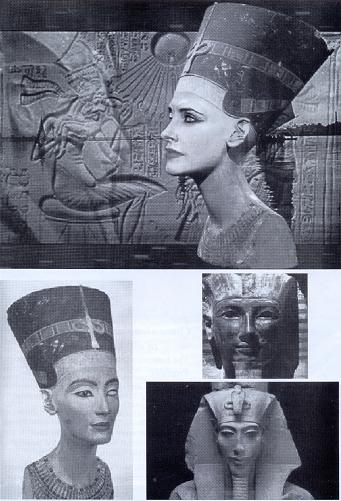RACIAL IDENTITIES OF PEOPLES IN THE BIBLE
Since the end of WWII the onslaught against the White Christian nations has accelerated and is aimed not only at the physical existence and wellbeing, but also the very soul of these nations. Within our midst we have politicians, theologians and teachers who are following an alien political agenda, who are feeding Christians, especially their vulnerable children, with views contrary to the Bible. This is a form of ‘social engineering’ which follows the communist doctrine where everybody is regarded as ‘equal’ in ability. This ‘equality’ is to be achieved by dumbing down the gifted and artificially raising the less gifted, especially in countries where there is forced racial mixing. Because the median in the distribution curve in intelligence varies considerably between na tions , this social engineering takes on an explicit racial agenda. Families and nations are to be done away with, and there will be a One World religion – which will not be Christianity. The One Worlders also wish to do away with race and national governments, thus promoting miscegenation where ultimately humanity becomes one malleable, amorphous brown race.
The one aspect with which this article wishes to deal is the new doctrine proclaimed from many pulpits in non-White churches an d more subtly by Wh
d more subtly by Wh ite priests, that Christ was a Coloured man. By implication, King David, Adam and even God would then be Coloured – for are we not ‘all’ made in His image? Some churches go as far as to say that Christ was crucified solely because he was Coloured. The reasoning used to propagate this lie is that Adam was the first person on Earth and that to have black, yellow, brown and white races on Earth today would require that Adam be a person of potentially many races – a mixture of all races . ‘Time ‘ magazine (Dec 22, 2003 and April 12 , 2004) had an artist’s recreation of the face of Christ where he was portrayed as a podgy, brown man with curly brown hair, with an insipid weak face. Had this been a depiction of Mohammed, the world would have gone up in flames as Muslims would have shown their disgust and anger.
ite priests, that Christ was a Coloured man. By implication, King David, Adam and even God would then be Coloured – for are we not ‘all’ made in His image? Some churches go as far as to say that Christ was crucified solely because he was Coloured. The reasoning used to propagate this lie is that Adam was the first person on Earth and that to have black, yellow, brown and white races on Earth today would require that Adam be a person of potentially many races – a mixture of all races . ‘Time ‘ magazine (Dec 22, 2003 and April 12 , 2004) had an artist’s recreation of the face of Christ where he was portrayed as a podgy, brown man with curly brown hair, with an insipid weak face. Had this been a depiction of Mohammed, the world would have gone up in flames as Muslims would have shown their disgust and anger.
What many people fail to understand is that people who inhabit a country and call themselves by an historical name need not be the people who lived there hundreds or even thousands of years ago. The demography (racial character) may have changed so much that they are unrecognizable when compared with the original inhabitants. Where did the name ‘German’ originate? It is perpetuated in the English language but is not what this people originally called themselves , and are known mostly by their tribal names in other languages. The land originally inhabited by the Scythians was later occupied by another people when they moved into what is today Deutschland and to distinguish between the two, the Romans called them the Germania Scythia – the genuine Scythians – and later the term Scythia was dropped and ‘Germania’ retained. The Romans brought this terminology to Britain. [Another explanation is that Ger–man meant warrior man as in Guerre for ‘war’ ]. The Greeks of today do not resemble the tall, fair-haired Greeks of antiquity; neither do the Italians of today look like the legionaries of Rome, who were initially required to be at least 6 foot tall. As other races became assimilated into the Roman Empire, this requirement had to be lowered in order to recruit sufficient soldiers. The dynamic sea-faring Portuguese from the 16th century with a population then of only about 1 million inhabitants (Severy, 1992) made the fatal mistake of allowing hordes of Black slaves into their homeland and as their blood became severely diluted they disappeared as a pioneering force from the world stage.
An interesting observation is that where inhabitants of a country rob their ‘own’ graves, this invariably indicates that the graves are not those of their ancestors e.g. the plundering of the tombs in Egypt which continues to this very day by people not descended from the Pharaohs. As yet, the British do not plunder Westminster Abbey!
Who was Adam?
The Bible is the history and genealogy of those descended from Adam. It is not concerned with the other peoples already in existence at the time Adam emerged except where they impinge on the story of the descendants of Adam. Adam was not the first person on Earth. This is borne out in the Bible where Cain is driven out of the land by God and says “I shall be a fugitive and a vagabond in the earth; and it shall come to pass, that everyone that findeth me shall slay me” (Gen. 4:14). This was said when Church lore would have you believe that there were ostensibly only four persons on earth – Adam, Eve and their two sons Cain and Abel. God’s response to Cain confirms that there were many other people not descended from Adam around: ”And the Lord said unto him, therefore whosoever slayeth Cain, vengeance shall be taken on him sevenfold. And the Lord set a mark upon Cain, lest any finding him should kill him” (Gen. 4:15). Why put a mark on Cain if only his mother and father were then in existence ? Cain and his wife then go on to build a city (Gen. 4:17) – just the two of them?!
If the underlying premise (that Adam is the progenitor of every person on earth past and present) is incorrect – and drastically so – then everything that follows will be incorrect. If yet further incorrect premises are added to the first premise (such as the Jews of today are the Israelites of yesteryear), then we are dealing with complete fabrications and distortions with severe implications for the descendants of Adam in an age where racial mixing is being forced upon the White Christian nations only.
The Concordance records Adam as meaning ‘red man’. He was said to have been moulded from red clay. In Hebrew Adam consists of two words as ‘Aw dawm’ which means ‘blood in the face, i.e. someone who is able to blush’. There is only one racial group that is able to blush – the White race. So how can Adam be the first man in the world, be white, yet give rise to all the dark nations as well? He did not. The Bible is a history only of the Adamites – those who were White. The Bible is not concerned with the creation of the other races. In fact, in the original Hebrew there were two creations mentioned in Genesis – the first (Chap. I) was of Man and the second (Chap. 2) was for an agriculturalist to till the Garden of Eden, who was called Adam. The first creation consisted of hunter-gatherers and the second was civilized man who performed agriculture. Where was agriculture first performed? Traditionally this is believed to have occurred between the Tigris and Euphrates Rivers in the land of Sumer. From here it spread out to the Nile and the Indus valley. If Adam was a White man, then his progeny would be White unless it was recorded that they had taken wives who were not white (as in the case of Esau who married a Hittite woman and had a son Eliphaz, who had a son Amalek who at times were bitter foes of the Israelites descended from Jacob, the twin brother of Esau).
Also, “When the Most High divided to the nations their inheritance, when he separated the sons of Adam, he set the bounds of the people according to the number of the children of Israel” (Deut.32:8). The sons of Adam refer to only the children of Israel.
It is interesting to note that in “Sons of Adam” Prof Abdel Sabur Shahin of Arabi Literature at Cairo University interprets the Muslim Koran as saying that Adam is the ‘father of humanity’ but not the first man to walk the earth. More accurately, based on the recorded characteristics of the descendants of Adam, he was the father of civilization.
The physical appearance of Jesus
Extracts of a letter from Pontius Pilate to Tiberius Caesar (copies in the Congressional Library in Washington) :
“…. . One day I observed in the midst of a group of people a young man who was leaning against a tree, calmly addressing the multitude. I was told it was Jesus. This I could easily have suspected so great was the difference between him and those listening to him. His golden coloured hair and beard gave to his appearance a celestial aspect. He appeared to be about 30 years of age. Never have I seen a sweeter or more serene countenance. What a contrast between him and his hearers with their black beards and tawny complexions! …. Later, I wrote to Jesus requesting an interview with him at the Praetorium. …. For some time I stood admiring this extraordinary man. There was nothing in him that was repelling , nor in his character, yet did I feel awed in his presence. I told him that there was a magnetic simplicity about him and his personality that elevated him far above the philosophers and teachers of his day. …. “.
A description of Jesus by Publius Lentrelus a resident of Judea in the reign of Tiberius Caesar which first appeared in the writings of St Anselm of Canterbury in the 11th century:
“There lives at this time in Judea a man of singular virtue whose name is Jesus Christ, whom the barbarians esteem as a prophet, but his followers love and adore as the offspring of the immortal God … He is a tall man, well-shaped, and of an amiable and revered aspect; his hair of a colour that can hardly be matched, falling into graceful curls, waving about and very agreeable crouching upon his shoulders, parted on the crown of the head, running as a stream to the front after the fashion of the Nazarites. His forehead high, large and imposing; his cheeks without spot or wrinkle, beautiful with a lovely red; his nose and mouth formed with exquisite symmetry; his beard, and of a colour suitable to his hair, reaching below his chin and parted in the middle like a fork; his eyes bright blue, clear and serene. Look innocent, dignified, manly and mature. In proportion of body most perfect, and captivating; his arms and hands delectable to behold. ….. A man for his extraordinary beauty and perfection, surpassing the children of men in every sense”.
A further description of Jesus is found in The Archko Volume which contains official court documents from the days of the Messiah. This information substantiates that He came from racial lines.’. which had blue eyes and golden hair. In a chapter titled “Gamaliel’s Interview” it states concerning Jesus: “I asked him to describe his person to me, so that I might know him if I should meet him. While he is nothing but a man, there is something about him that distinguishes him from every other man. He is the picture of his mother, only he has not her smooth, round face. His hair is a little more golden than hers, though it is as much from sunburn than anything else . He is tall, and his shoulders are a little drooped; his visage is thin and of a swarthy complexion, though this is from exposure. His eyes are large and a soft blue, and rather dull and heavy”.
Mary was from a priestly bloodline with direct descent from Aaron (the Egyptian high priest) who was the brother of Moses, while Elizabeth, wife of Zacharias was the cousin of Mary and the mother of John the Baptist and thus also descended of Aaron (Luke 1: 5, 36). Moses must have closely resembled the ruling class of Egypt to have been accepted as family after been found in the basket in the bulrushes.
The Old Testament book The Song of Solomon (5:10) appears to confirm the above descriptions of Jesus. Many theologians are convinced that the ‘husband’ in this book has a dual fulfilment in both Solomon and, prophetically, in Jesus the Messiah: “My beloved {husband} is white and ruddy . . . .”
The wise men who visited the stable soon after the birth of Jesus after following the prophesied signs in the heavens, confirmed that the child was ‘without blemish and without spot’ (1 Peter 1:19) and was indeed the Christ (blemish = physical defect or disfigurement e.g. scar or stain). Christ had to be purebred to be the son of God i.e. not of mixed blood. Theologians today like to interpret this as ‘without a moral defect’ but this would be impossible for the wise men to determine at birth .
The physical description of David
”And he sent, and brought him in. Now he was ruddy [admoni], and withal of a beautiful countenance, and goodly to look to” (1 Sam. 16:12) .
”And when the Philistine [Goliath] looked about, and saw David, he disdained him: for he was but a youth, and ruddy, and of a fair countenance (1 Sam. 17:42). David’s daughter Tamar was ‘fair’ (2 Sam. 13:1). Sarah and Rebekah who were both descended from Adam were both described as being ‘very fair’ (Gen. 12:11 , 14; 24:16; 26:7). Moses was ‘exceedingly fair ‘ (Acts 7:20). The daughters of Job, one of the Adamic patriarchs, were known as the ‘ fairest women in all the land’ (Job 42:15). Solomon was described as being ‘white and ruddy’ (Solomon 5:10). The Nazarites (consecrated persons) of Judah were ‘whiter than milk’ and ‘more ruddy in body than rubies’ (Lam. 4:7).
[N.B. Chambers Concise Dictionary, 1988, p 932. Ruddy: red; reddish; of the colour of healthy skin in white-skinned peoples ].
Jesus was a descendant of David.
Ancient writers such as Polemon of Ilium, Galienos, Clement of Alexandria, and Adamantios state that the Scythians were like the Celts and Germans, and describe them as ruddy-fair. Ammianus (c350 A.D.) describes them as almost all tall and handsome, with hair almost yellow, and a fierce look. This is how the Bible describes the Israelites.
The physical appearance of Abraham and Sarah’s descendants:
Abraham migrated from the city of Ur in Sumer to the Promised Land. The Sumerians were Aryans and so were Abraham and his family. ‘Pur’ is the Sanskrit word for city from which the Greek word ‘Polis’ is derived. Ur from which Abraham and his family migrated was an Aryan city in Sumer.
The name Laban itself means to be white. He was Abraham’s grand-nephew, father of Jacob’s wives Leah and Rachel. Jacob’s father Isaac got his wife Rebekah from Laban’s father, Bethuel.
The Bible clearly describes Abraham and Sarah’s descendants as ‘fair’ (Heb. yaheh . Gen. 12:11 ; 24:16; 26:7; Esther 2:7) .
The description of Sarah in the seventh Dead Sea Scroll extolled Sarah’s perfection:
“Her skin was pure white; She had long and lovely hair; her limbs were smooth and rounded (her thighs were shapely); She had slender legs and small feet; her hands were slim and long and so were her fingers”. Abraham, being a relative of Sarah (Gen. 20:12) would be identical in appearance.
The physical description of Israel’s Nazarites:
The Nazarites are described as being ‘purer than snow, they were whiter than milk, they were more ruddy in body than rubies (Lam. 4:7).
The physical appearance of the ancient Egyptians:
Blond and Red Haired Mummies of Egypt :
Egyptian artists were acutely conscious of the physical characteristics of the diverse peoples with whom Egypt had contact. Egyptian artists represented Libyans and the pre-Israelite inhabitants of Canaan as having fair hair and light eyes in sharp contrast to the black Nubians. Egyptian and Cretan artists followed a convention of painting males with red skins and females with white skins.
Queen Hatshepsut, wife of Pharaoh Thutmosis II (she ruled Egypt after Thutmosis ‘ death in 1520 BC): “The mummy was mostly unwrapped and on its back. Strands of reddish-blond hair lay on the floor beneath the head” (Egyptologist Donald P. Ryan, 1989).
Yuya – believed to be the Biblical Joseph who was Prime Minister in Egypt during 1400 BC and father of Tiye (wife of Pharaoh Amenhotep lll). Yuya ‘s blond hair and Caucasian facial structure have been well preserved by the embalming process. Of interest, seers in the Near East in ancient times dressed in coats of many colours to distinguish them.
Ramesses The Great
Ramesses II (Egyptian king 1292 – 1225 BC): Scientific examination confirmed that his red hair was natural and not as a result of the embalming process. After this king, Egypt entered into a steady period of decay, caused directly by the elimination of the original Egyptians, and their replacement with a mixed population. This racially divergent nation was never again to reach the heights achieved by the First, Second or the first part of the Third Kingdoms. In these later years there were competing claimants to the pharaohs’ throne, many of whom, racially speaking, bore no resemblance to the original pharaohs at all.
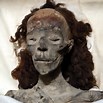 Queen Tiye (The “Elder Lady”), the daughter of Biblical Joseph: is well-mummified with curly blond-red hair.
Queen Tiye (The “Elder Lady”), the daughter of Biblical Joseph: is well-mummified with curly blond-red hair.
The Ramesses II family believed themselves to be divine descendants of Seth with their red hair as proof of their lineage. Red-haired Egyptians are not only of anthropological interest but also have great symbolic importance because in ancient Egypt the god Seth was said to have been red-haired, and redheads were said to worship the god devoutly.
Another example is of Pharaoh Seti I (son of Ramesses I) who became pharaoh in 1320 BC and who has full Caucasian features and hair.
“Ginger”: a well preserved body buried in a sand grave circa 3300 BC but now in the British Museum, possibly an ordinary artisan, had red hair, presupposing that the genes were not confined to the ruling class.
Queen Cleopatra: (below) Of Greek ancestry, she is recorded as having red hair.
About 2.4% of the British population have 50% or more red hairs on the head; 12% in Scotland , especially amongst the Picts; with red hair common in Ireland and Norway, and occurring in small numbers throughout Europe (The Ensign Message, April-June 2013, pg. 29).
Wherever the founders of ancient Egypt settled, pyramids were built. Hence pyramids are found in Central & South America, China (over 300 pyramids), Philippines, Canary Islands, Russia, and more than twenty in Europe (Italy, Spain, France, Croatia, Slovenia, Serbia, Bosnia, Herzegovina, and Greece). The largest of all pyramids was fairly recently discovered in Bosnia (Osmanagich, S.).
The myths and legends of Greece, India and South America describe the rule of Osiris and Isis: “The Mighty Osiris and Isis walked into the Egyptian Valley out of nowhere and assumed command. They were taller and more imposing than the men of the time, with long blond hair, marble like white skin and remarkable powers that enabled miracles”.
Moses was found as a baby in a basket in the bulrushes and was adopted by the Egyptian queen. For Moses to have passed as an Egyptian and vice versa, he would have had to have looked the same.
END OF PART ONE


